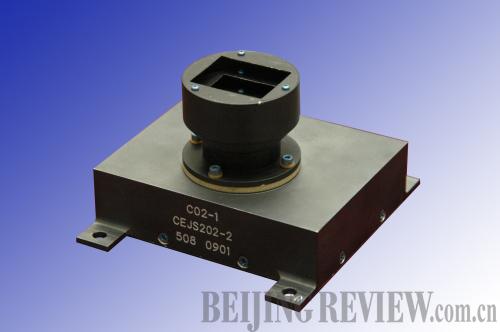|
 |
|
The charge-coupled device camera carried with Chang'e-2 (XINHUA) | Scientists have been working on how to use the resources discovered on the Moon to save the Earth from an impending energy crisis. "There are so many kinds of resources with enormous reserves on the Moon. The titanium alone is distributed in areas as vast as China's territory," said Ouyang. He particularly pointed out the huge reserves of raw materials for controlled nuclear fusion on the Moon. China's lunar exploration program has surveyed and calculated that there are between 1 million and 5 million tons of raw materials in the lunar soil while the world's annual demand is merely 100 tons, which can be transported back with a space shuttle.
The first two stages of China's lunar exploration program cost less than 2 billion yuan ($299 million) in total, of which the first stage spent around 1.4 billion yuan ($209 million). "The expense for the first stage only equals that of building 2 km of subways in Beijing or less than 20 km of high-speed railway between Beijing and Shanghai," said Long Lehao, who was the chief designer for Long-March 3 rockets.
 |
|
The 490N engine monitor camera (XINHUA) | China is the third country in the world to build rockets carrying manned spacecraft. Long said that China needs to develop a new generation of carrier rockets. "Usually it takes around six years to develop a brand-new rocket. Thus the maiden flight of the new generation of carrier rockets is expected to materialize in 2015," said Long.
Chinese scientists believe that China's lunar exploration program is part of the human cause of peacefully using the universe. Wu said that China has carried out international cooperation with other countries and is willing to expand the cooperation. He said the European Space Agency (ESA) has offered China assistance in controlling orbiting satellites while in return China has provided its scientific data to the ESA free of charge. "But we have to rely on ourselves to develop better technologies," Wu said.
|
